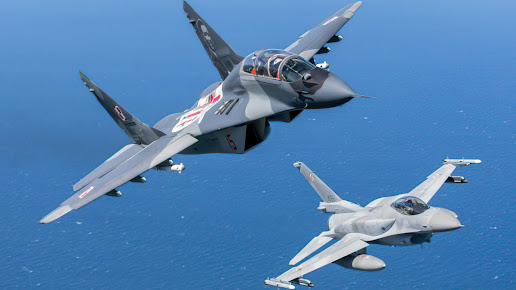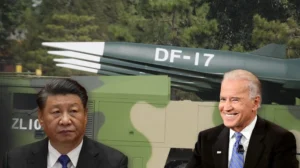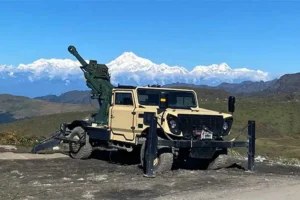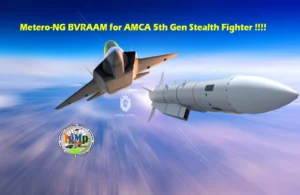Source : The Eurasian Times
Need, durability, practicality, socio-economy, and political economy, if not triumphs, takes precedence over technology. Put differently, when new technology emerges, the old finds relevance elsewhere, if not wholly displaced. It doesn’t diminish the said technological evolution – often mistaken as a revolution – but that the reasons behind the relevance of the old often go unexamined in the clamor.
Alexander Yermakov nowhere alludes to the above premise. It is just this author’s musing. But his paper, ‘Why Cold War Era Jets Do Not Retire and are Set to Share the Skies with Drones,’ coincidentally backs it up.
Poetically titled ‘There’s a Country for Old Planes,’ it untangles the curious situation where the advent of the stealth-capable 5th and the upcoming 6th Generation has not been a defining, permanent end for their preceding 4th generation warbirds, as observers thought it was.
Not only are Cold War-era Gen. 4 planes still in service, their newfound relevance in countries like even the United States (US) – from the where the new emerging jets were said to have rung the death knell for the ‘lost generation’ – indicates they are going to be around for a long time.
The ubiquitous F-16, Sukhoi Su-27/30, Su-35, F-15, and the legendary MiG-29 are not going away anytime soon.
Born in the Cold War, Evolved in the Unipolar Era
The US Air Force plans to operate the F-16 jet for the next 15 years if their upgrade plans and indications by USAF Chief of Staff General Charles CQ Brown Jr. are anything to go by.
The Sukhois and MiGs, meanwhile, are widely used in Asian and Eastern European air forces, with some of the upgrades in engines and avionics putting them firmly in the Gen 4.5 class.
Yermakov points to this “longevity” of the Cold War jets to have not characterized World War 2-era planes.
A study of the F-16 explains this phenomenon – the most successful, capable, and widely used US fighter. Fighter jet proponents in the USAF pushed for their Light Weight Fighter (LWF) like the MiG-21 after the Vietnam War – a cheap, mass-produced, highly maneuverable fighter with simple radio equipment that could fire air-to-air missiles, leaving the more high-end roles to the F-15.
The F-15 Eagle itself acquired a legacy and hype of its own back then, similar to the one surrounding the F-22 now.
The joint production option secured the participation of NATO nations like Belgium, Norway, Netherlands, and Denmark back then. At the same time, the affordable cost ensured even the not-so-rich nations bought it after the Cold War.
Former Warsaw Pact countries like Slovakia and Poland began gravitating towards the US orbit after the Soviet Union collapsed. Israel’s successful strike of an Iraqi nuclear reactor in 1981 at Osirak was all needed to raise the F-16’s image.
But after the Cold War, the US found itself in a peculiar situation characterized by three factors. First, to maintain its technical superiority in the ‘Unipolar era’ with no peer adversary, it came up with the F-22 and the F-35 – the latter meant to phase out the F-16 by offering the same joint production provisions.
Second, there were nations like Russia and China that were not capable of either designing or economically affording a whole new aircraft project. Lastly, other wealthier nations did not have the motivation. These were “European countries that were slowly and painstakingly finishing their programs,” Yermakov said.
This provided significant time for the F-16, F-15, and Su-27 to upgrade and proliferate. These absorbed newer electronics, sensors, avionics, computers, and software while becoming delivery platforms for the most diverse weapons, far from what they were initially conceived for.
Former IAF Jaguar pilot Squadron Leader Vijainder K. Thakur calls this development trajectory of Gen. 5 and 4 planes “evolutionary” and not “revolutionary.”
He said there is no further scope for manned fighters to develop kinematic performance like speed, range, and maneuverability.
“They have maxed out. The focus is now on improving systems – sensors, data crunching, sensor fusion, weapons, cloaking, countermeasures,” Thakur adds. A section of military aviation experts dismisses the stealth capability as hyped, with some claiming Gen. 4++ Su-35s stand a reasonable chance to defeat the F-35 or the F-22.
That older Generation S and L-band radars with longer ‘wavelengths’ have been found capable of detecting stealth – albeit with a poor radar picture and without a track quality detection – lends some credence to this theory.
Peer competitors with adequately networked assets can find ways to beat stealth. The US dropping Turkey from the F-35 program over its purchase of the Russian S-400, which the former says can compromise the F-35’s stealth, is testament. This is not to mention the severe issues with the F-35 and the F-22.
Supply chain, software, and engine troubles for the former, stealth paint coating, life-cycle costs, and the absence of a Helmet Mounted Display (HMD) for the latter – amongst many others.
As the US busied itself in wars with non-state actors with no professional militaries, China caught up with the J-20, stunning Washington’s planners with the sudden erosion of their comfort in the area. Their answer was the ‘Gen. 6’ Next Generation Air Dominance Fighter (NGAD).
But the lack of clarity in the effort is reflected in the fact that no one has been able to articulate a characterization of the ‘sixth generation’ clearly. Yermakov calls the category an “artificial” concept coined by aviation historians and marketing executives.
The Generation after Gen. 5 – whatever it may be called – will conceivably have even more powerful radars, engines, and Directed Energy Weapons (DEW).
The Future is ‘Loyal Wingmen Drones’
But beyond that, the future now is the inclusion of drones, flying alongside the fighter and capable of all routine tasks ranging from surveillance, data gathering through sensors, communication relays, data links, electronic warfare, jamming, and even serving as missile platforms.
Thakur classifies these wingmen drones as ‘systems,’ commanded by a manned platform, the ‘system.’ “It is the ‘systems’ that might be uncomplicated, even disposable platforms of diverse shapes and sizes, while the system (manned platform) will see rapid capability changes,” Thakur added.
Sameer Patil, a Senior Fellow at the Observer’s Research Foundation (ORF), pointed out how while the IAF is the only one retaining Gen. 3 and 4 fighters, it “also understands that drones should be developed in the future.” Patil had participated in a talk on Yermakov’s paper held by Russia’s Valdai Discussion Club.
India officially displaying its Combat Air Teaming System (CATS) concept during Aero India 2021 is a testament. “India will also acquire Gen. 5 jets by the end of this decade, but in general, it is still behind the advanced countries by twenty to thirty years.”
Gen. 5 jets’ are inherently technically incapable of adapting to rapidly changing conditions owing to the scale of their technological sophistication and prohibitive costs, according to Aleksei Bulatov, Deputy Chief Designer of the Su-75′ Checkmate’, made by the United Aircraft Corporation (UAC).
The F-35, therefore, might not disappear but might fall to “mediocre status,” but not the venerable F-16 or F-15.









